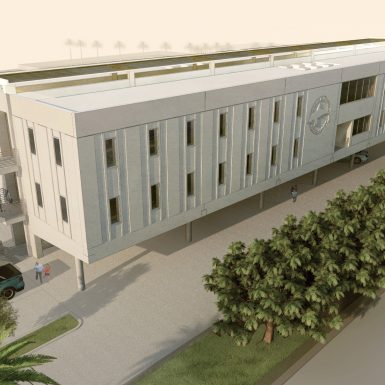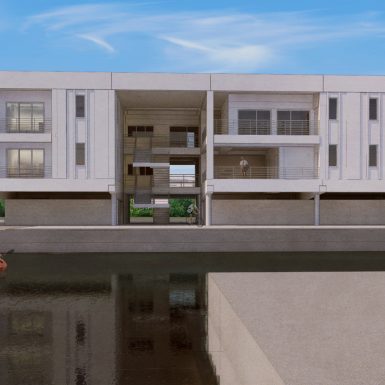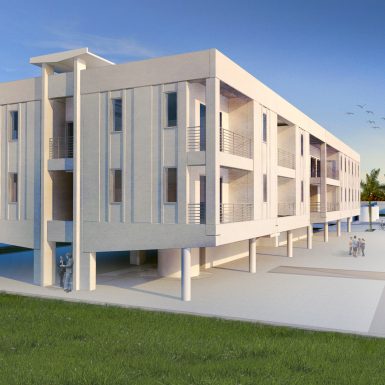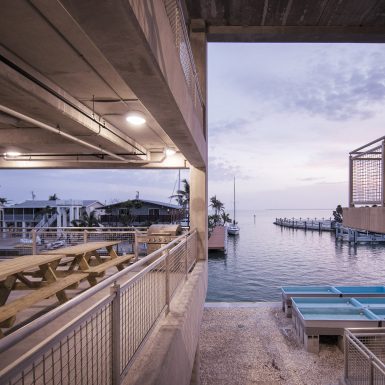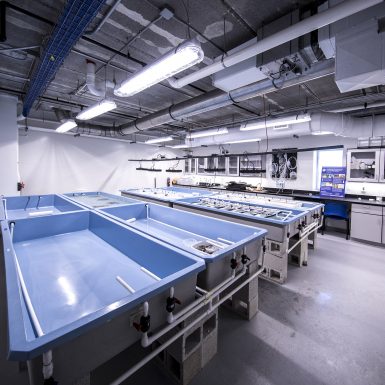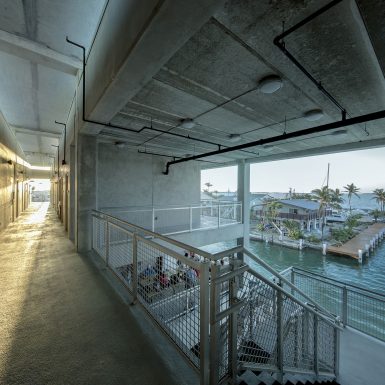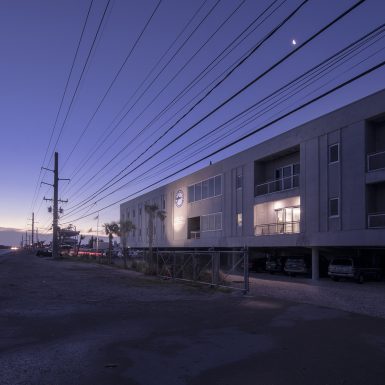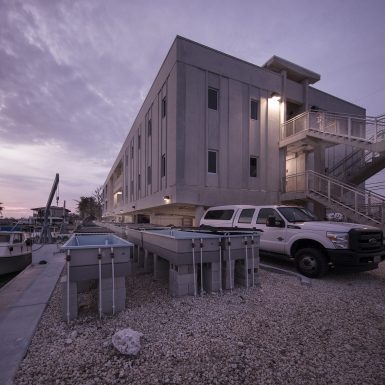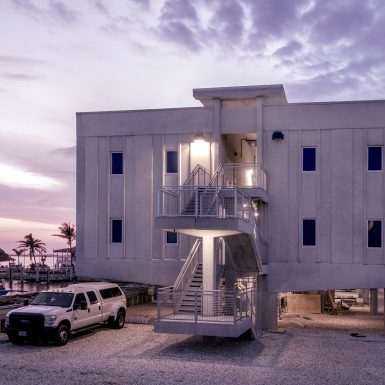The Elizabeth Moore International Center for Coral Reef Research & Restoration is a field station for Mote Marine Laboratory in Summerland Key, Florida. The building provides dormitory, laboratory, educational classrooms, and administrative offices for Mote’s ongoing mission to provide answers on how to arrest and reverse coral reef attrition and ocean acidification. At the same time, the facility serves as a platform for educating and inspiring the next generation of Marine scientist. The design encourages a collegiate atmosphere, with large exterior gathering areas, and integrated and overlapping vertical spaces which encourages communication and fellowship between post-doctoral research scientists and students who may occupy other areas of the building at the same time.
The lower Florida Keys is one of the most highly regulated regions for new construction in the entire United States. Utilizing exterior porches as expanded living areas in the lush tropical climate and exterior gathering and work areas as protected research space allowed the building to capture nearly twice the functional area allowable under highly restrictive environmental codes. With the introduction of this basic strategy of inside-outside interplay, we were able to maximize cross breezes and natural building ventilation. The central exterior hallway is open on either end and in the middle. It is also ventilated by an elevated precast spine running the length of the building. Along with letting daylight into the hallway, this spine also serves as a stable base for a 30.1-kilowatt solar array. This in conjunction with a rainwater harvesting system and high efficiency heating and cooling were among the elements which resulted in the building being awarded a LEED Gold certificate, one of the only commercial buildings to achieve this in the Lower Keys.
Compact building sites with limited material staging areas and restrictions on vehicular access to the Keys led to the decision to use pre-cast concrete as the construction material. This works well to satisfy the client’s demand for a building hardened to withstand Category V storms. In an early design meeting we were challenged to design a building that could withstand even the most severe storms. Within 6 weeks of the ribbon cutting, Hurricane Irma’s the eyewall passed over the building. All critical building systems remained operational throughout the storm, preserving critical research and experiments that would have otherwise perished with the loss of electricity or a compromised envelope.





